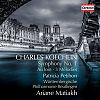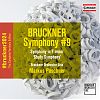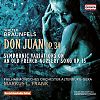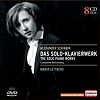cd

Emil von Sauer / Conrad Ansorge
OLIVER TRIENDL, piano Rundfunk-Sinfonieorchester Berlin · ROLAND KLUTTIG
THE PUPILS OF FRANZ LISZT
Emil von Sauer and Conrad Ansorge had the privilege of studying under the legendary Franz Liszt. Liszt himself never claimed to be a teacher but rather an advisor. But anyway, for both of them, these lessons with the world-famous composer and pianist influenced and increased their style and extraordinary capabilities. With this recording Capriccio presents two outstanding and unjustly forgotten piano concertos which shows the deep understanding of musical forms and structures and versatility of the Pupils of Franz Liszt.
Hörprobe
Weitere Bilder

Christian Sinding
Norrköping Symphony Orchestra · Karl-Heinz Steffens
Remembered by ambitious amateur pianists for his Rustle of Spring, Christian Sinding was a more important figure in the music of his native Norway than this might suggest; there, in his time, he was second only to Grieg. Trained in Leipzig, he fell under the influence of Liszt and Wagner, producing a large quantity of music that, although it enjoyed contemporary popularity, remains forgotten in today's concert programmes. In revealing the inherent fervour of his four symphonies, this album enjoys sensitive and enthusiastic interpretations from the Norrköping Symphony Orchestra under Karl Heinz Steffens, for whom Sinding has become a composer close to his heart.
Youtube

DMITRI SHOSTAKOVICH - Chamber Music
Petersen Quartet · Ewa Kupiec · Moscow Virtuosi · Vladimir Spivakov
Dmitri Shostakovich is one of the indubitably great composers of the 20th century and left works of greatness in every genre, from the symphonies to opera, film- and light music, concertos, and, of course, chamber music. This collection offers a great overview of his contributions to that genre. It features a few favorites, like Rudolf Barshai’s Chamber Symphony (arranged from String Quartet No.8), String Quartet No.1, and the Piano Quintet to lesser-known gems and rarely heard works for two pianos like the tiny, witty Tarantella or his dramatic, cinematic Concertino. It is capped with Alfred Schnittke’s tribute to the master, the Prelude in Memory of Dmitri Shostakovich.
Hörprobe
Weitere Bilder

Phillip & Xaver Scharwenka
YOERAE KIM, violin · MATTEO WEBER, piano
After a prolonged period during which they were ignored wholesale, the compositions of both Philipp and Xaver Scharwenka are performed again – occasionally, anyway—and some of them have been seen the light of day on record. However, no discographic attempt has yet been made to explore their music in relation to each other, which might seem surprising, given their very similar artistic influences and the close connection between the two composing brothers. In this collection, Yoerae Kim and Matteo Weber demonstrate their sensitivity to a dramaturgically cohesive program, which highlights those intriguing biographical connections. They pair a violin sonata by each brother with a serenade and a suite, spanning a creative period of some 35 years.
Hörprobe
Weitere Bilder

Karl Weigl - Symphony No. 3
Deutsche Staatsphilharmonie Rheinland-Pfalz · Jürgen Bruns
The two works recorded on this disc both come from a creative period at the beginning of the 1930s. In terms of style, with his works linked to basic tonalities Weigl drew on the sound realm of late Romanticism, from whose aesthetics he never departed in favour of more progressive contemporary trends. Weigl’s knack for orchestration shows both in the hymnic climaxes as well as the chamber music-like passages. Weigl never lived to hear any performances of either his Third Symphony or the Symphonic Prelude. Like so many of his larger works, these scores were not (re-)discovered until interest in Weigl’s music resurged, decades later. This release allows audiences to hear both works for the first time on record.






































































































































































































































































































































































































































